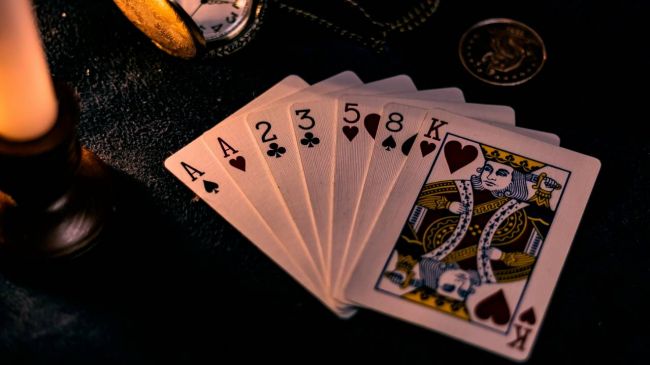On This Page
- Why Strands Feels Different From Other NYT Games
- Inside the Grid: How the 6×8 Board Shapes Strategy
- The Role of Clever Clues in Strands
- When a Hint Helps vs. When It Hurts
- The Spangram as the Game’s Keystone
- Unpacking Common Types of Themes
- External Hint Culture: Who Provides What
- Community Talk: Lessons from Reddit & Forums
- Design Tricks That Trip Players Up
- Turning Strands Into a Daily Routine
- Future of Strands Hint Culture
- Final Word
The New York Times has already given us daily addictions like Wordle and Connections, but Strands is on another level. Instead of quick guesses or color-coded grids, you’re navigating a 6×8 jungle of letters, trying to tease out a theme and find one elusive word — the spangram — that ties everything together.
No wonder people keep searching for “Strands hints.” Let’s unpack why the game feels so different, how hints can be both friend and foe, and where solvers go when they need that extra push.
Why Strands Feels Different From Other NYT Games
Wordle is about vocabulary. Connections is about grouping. Spelling Bee is about creativity. Strands? It’s about seeing pathways. Every letter you connect has to form a clean route on the board, and every word you uncover has to fit the hidden theme.
This twist is why hints matter here more than in any other NYT puzzle. In Strands, one missed connection can lock you out of the entire theme.
Inside the Grid: How the 6×8 Board Shapes Strategy
That 6×8 setup — 48 letters — is not random. It forces you to think in spatial terms: up, down, sideways, and even diagonally. Letters can snake around corners, creating words you might miss if you only read left-to-right.
Unlike Wordle’s five boxes, Strands asks you to visualize patterns. Many players scan for clusters of familiar prefixes or suffixes (like “ING” or “TION”) as a starting point. Others work the edges, since theme words and the spangram often hug the perimeter.
The Role of Clever Clues in Strands
Every puzzle begins with a clue — short, cheeky, sometimes misleading. It might sound straightforward (“Star players”) but secretly point to constellations, not athletes.
That’s the charm: clues operate on wordplay, not definition. And that’s why hints are so sought after — because solvers aren’t always sure whether to take the clue literally or figuratively.
When a Hint Helps vs. When It Hurts
Hints in Strands are a safety net. For every three non-theme words you find, you unlock a hint — revealing part of a theme word on the board.
Used wisely, hints can kickstart momentum. Used recklessly, they can drain the satisfaction out of the puzzle. Think of hints like salt in cooking: a little enhances the experience, too much ruins the dish.
The Spangram as the Game’s Keystone
Ask any seasoned solver and they’ll say: find the spangram, and everything else clicks.
The spangram is unique because it bridges two opposite sides of the board. Sometimes it runs horizontally, other times vertically or even diagonally. It’s longer than most words and often feels like the “aha!” moment of the game.
Once you nail the spangram, the theme words fall into place like dominoes. That’s why so many hint guides — from TechRadar to Beebom — emphasize it in their breakdowns.
Unpacking Common Types of Themes
Over time, you start to notice familiar categories. Strands loves to test you with:
- Food and drink (spices, flavors, meals)
- Pop culture (movies, bands, celebrities)
- Nature (trees, animals, constellations)
- Objects (tools, instruments, vehicles)
- Opposites and pairs (hot/cold, day/night)
Knowing these “theme archetypes” makes it easier to predict where the puzzle is headed — and which hints to take seriously.
External Hint Culture: Who Provides What
If you’ve ever typed “Strands hint today” into Google, you’ve seen the ecosystem.
- Word.tips tends to offer spoiler-safe nudges.
- Parade is straightforward, with theme and spangram help.
- TechRadar and DigitalTrends give progressive ladders of hints.
- Beebom often focuses on spangram orientation.
Each outlet has its own “voice,” which is why many solvers keep multiple tabs open to compare.
Community Talk: Lessons from Reddit & Forums
The most passionate conversations happen on Reddit’s r/NYTStrands. Players share frustrations (“this clue made no sense!”), celebrate streaks, and trade strategies.
Community chatter is valuable because it reminds you you’re not alone — if the clue feels impossible, chances are others thought the same. And sometimes, a single comment sparks the insight you needed.
Design Tricks That Trip Players Up
Puzzle constructors are sneaky. Common tactics include:
- Letter clusters that suggest false words.
- Symmetry that tricks your eye into spotting fake paths.
- Diagonal misdirection, since people scan horizontal/vertical first.
- Overlong false trails that look promising but dead-end.
Recognizing these patterns turns frustration into foresight — you’ll spot traps before falling into them.
Turning Strands Into a Daily Routine
For many, Strands isn’t just a puzzle — it’s a ritual. A quick solve with morning coffee. A brain teaser on the commute. A streak to protect before bed.
Hints become part of this rhythm. Some solvers deliberately withhold hints early to stretch the challenge, while others tap them strategically to keep the daily streak alive.
Future of Strands Hint Culture
Strands is still young, which means its “hint culture” is evolving. We could see:
- AI-driven hint companions that generate custom nudges.
- Bigger archives of past puzzles, searchable by theme.
- Community-built databases of spangram patterns.
If Wordle built a global culture of colored squares, Strands may build a culture of shared hints and collective solving.
Final Word
Strands hints aren’t cheats — they’re part of the game’s DNA. Whether you get them in-app, through NYT Sidekick columns, or from community-driven guides, they exist to keep the puzzle playful, not punishing.
So the next time you’re stuck on that 6×8 grid, remember: hints aren’t shortcuts, they’re stepping stones. Use them wisely, enjoy the journey, and let the spangram lead you home.
Post Comment
Be the first to post comment!





